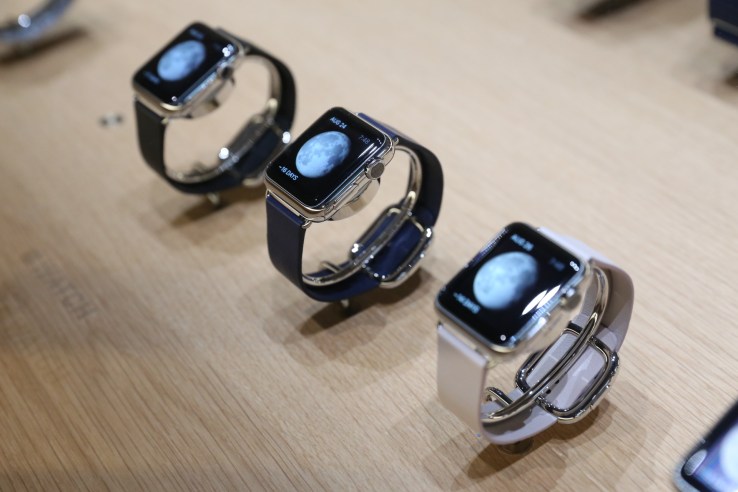
Apple’s new wearable hardware could eventually become much more than just an optional accessory – eventually, it could be one half of a Voltron-style combo that makes up the bulk of our computing life, relegating the tablet and smartphone model to the past. Just like a tablet/smartphone combo was a common duo over the past few years, a smartwatch/phablet duo could be the optimal setup for working on-the-go in the future.
The iPad and iPhone previously operated together as a way to both quickly and easily handle small tasks, but also to have a larger device on hand for taking care of more serious business, or for easier reading of longer content. Apple’s ability to create a tablet that people actually wanted to use probably cut the home PC out of the loop for a big chunk of users – and the market trends among the general PC OEM population over the past few years seems to back that up.
Of course, no computing paradigm is permanent. The iPhone was perhaps the first proof for many that a lot of general computing could be handled without having to seek further than your pocket. The Apple Watch will likely offer a similar realization, and the way it changes how we look at our devices could result in a flip of position and popularity between iPhone 6 and 6 Plus models.
While Apple doesn’t reveal specific details on the iPhone 6/6 Plus sales mix when it announces iPhone numbers each quarter (or even split between the current generation and previous ones, for that matter), Apple CEO Tim Cook did say during the company’s most recent earnings call that the iPhone 6 was outselling the 6 Plus during the last quarter. I’d argue that the Apple Watch will be the bump needed to switch that around for the coming generation of new iPhone devices, because so much more can be done on the wrist, which affects the basic mechanics of carrying a large device in a big way.
As it is, I’m torn between the convenience of the smaller iPhone 6 and the big benefits of the larger display on the iPhone 6 Plus. But when the Apple Watch is added into the mix, the choice becomes much more clear. Even if the Watch only decreases the number of times you have to actually retrieve your iPhone from your bag or pocket by around 30 percent (and I’m anticipating more than that based on early impressions and reports from longer-term testers), then that already mitigates some of the downsides of the larger device. Currently, my primary reason for going with the iPhone 6 is basically just that the 6 Plus works better as something carried in a bag or coat than a pants pocket. The pocket, however, is far easier to reach in most settings.
So long as the Watch is sufficient for triaging most of the cases in which reaching into a bag would be awkward (while talking to others, for instance), my iPhone 6 Plus pains would be alleviated. And the combo then eliminates much of the benefit of carrying an iPad.
As a result, I think it’s worth considering the Apple Watch as more of an iPad-like product line than as an iPhone accessory. If Apple can usher in a shift to a wearables/smartphone paradigm, the opportunity might be far greater than if it was just adding and additional device to the existing list of devices anyone uses on a daily basis.
That’s not to say the iPad goes away, either; I’d see it becoming even more of a PC or home computer replacement in this new arrangement, spending more time on the coffee table than in the bag. And that new vision has me excited – I’ve given up on fantasies of going back to a more unplugged world, but Apple Watch could at least avoid those smartphone attention holes when a notification pulls you into a lengthy, distracted aimless browsing session.
No comments:
Post a Comment